Paisley Liberal Club: politics, people, ruin & artistic subtlety
Artist Stuart Middleton has cleaned up & made presentable for the public the former Liberal Club in Paisley, near Glasgow. In doing so he not only opens up a space abandoned since 2015, but allows subtle glimpses into the places past and politics. Bobby Jewell visited, finding a soft edge between artistic presence & the space speaking for itself, through it questioning our culture’s love of demolition.
After a ten-minute train ride from central Glasgow, then a
short walk up the high street you will find Paisley Liberal Club. It’s a
journey artist Stuart Middleton has been making nearly daily for two months in
preparation of his exhibition. His interventions are subtle, with visitors
entering through the open doors possibly without noticing much change from the
state of abandonment it has been in since becoming unoccupied in 2015. It can
be a cliché to talk about celebrating context when discussing art installations
in historic buildings, but Middleton’s tweaks to the space simply present the
architectural, cultural, and historic context in a refreshingly honest way.
![]()
![]()
![]()
The building itself dates from 1886, standing at the edge of the town centre above a nail salon and charity shop. It’s a fine enough piece of Victorian architecture, with the exhibition barely announced externally - only a single open door at the street level indicating something has changed. The visitor experiencing immediate transportation from Paisley’s busy high street into a crumbling and silent space.
The building has lived many different lives – from Liberal Club, to working men’s social, to gig venue. It’s a building that shows in its skin the stories it’s witnessed, the people it’s contained, and the politics it’s aired. Dusty carpets, wallpaper peeling off, sun-bleached signage, damp, unknown stains, and debris all greet the visitor on arrival, continuing throughout its spaces.
![]()
![]()
![]()
Paisley is known for its history of left-wing politics. Outside the club is a memorial to “A Great Communist” William Gallagher, and this history finds its way into the reading of the internal space. It could be read as provincial, or a little naff, but these clubs formed a huge element of social and cultural history. Who were the everyday people who populated this building over the twelve decades? When did the political debate and charged discourse fade into the booziness, parlour games, kipper ties, variety acts, and pub rock bands?
A sign referencing lapsed memberships and the price of drinks stands out among the bar area, referencing the totally alien protocol that governed the Liberal Club and other similar venues back in their heyday. Even relatively modern and mundane items like stray mix-CDs, posters designed in Microsoft WordArt, and beer mats with almost their original colouring are somehow fascinating in this context of the club’s history.
![]()
![]()
![]()
This dilapidation adds to the secretive feel of the exhibition. Would I normally be interested in visiting a snooker hall on a sunny Saturday afternoon? No. Would I be interested in visiting an abandoned Snooker Hall? More than anything else in the world. The snooker hall room itself is one of the standout and most atmospheric spaces of the exhibition. With the absence of one of the original snooker tables, Middleton has installed a sunken white tank, built to the same dimensions and ‘completing’ the grid of the room - yet juxtaposing the earthier tones of the orange walls, green felt, ironwork, and low levels of natural light. The tank itself is decorated with a handful of ephemeral objects such as coins collected from around the Club.
A mesh screen prevents any movement up the staircase, adding to the secrecy of where a visitor is allowed and not allowed access. The other side of this pourous barrier, decayed steps lead to an unknown space, to its side another closed door. Such hidden spaces, and unknown histories, offer simple but appreciated moment in the exhibition, that for all I knew could have been entirely unintentional
![]()
![]()
It’s that sense of mystery that Middleton plays into with the space. With no documentation of which elements he has added, subtracted, or rearranged, the only literature available refers to his process of work, not the outcome of his actions. In the space, the visitor starts to question the veracity of a discovered stray document, or whether a collection of items in a corner is curated or part of a general disarray.
Some interventions can leave a little too much to the imagination, even if there is an unsureness over who put them there, or when. A circular display of pint and wine glasses in the centre of The Wee Bar is perhaps too minimal of an intervention, and it’s a shame most of the main function room is taken over by a tarpaulin covering half of the stage when the upstairs gig venue (and former badminton hall) allows visitors to happily rummage around.
![]()
![]()
Middleton says a lot of his work was focused on cleaning up the rooms – which looking back at assorted urban exploration photos online proves true – and this emphasis on simply showing the Liberal Club with a sense of clarity is a satisfying artistic response. Visitors can freely move around and experience the space as wished, without the usual red tape, high-vis or stewarding an architect or historian may expect from a typical abandoned site visit.
It’s also a commendable act to inhabit the space as an artist and talk openly about the basic act of cleaning, giving an overlooked space some attention. Overall you come away thinking about what’s possible architecturally with our existing built environment, looking beyond the cycle of demolition and rebuild to create conditions to consider what we already have available.
![]()
![]()
David Dale Gallery, who worked with Middleton on the show, say that the building’s owner was more than happy for the gallery and artist to be occupying the building rather than squatters, but it’s future beyond that remains uncertain. It would be a fantastic building to retrofit, but it’s harder to prescribe what use it could provide to Paisley, and harder still to imagine how it could be financed. The current trend for façade-retention, but stripping back the body of a building, could be an outcome – this exhibition may have further value in showing what a loss that approach would be.
The club is a stone’s throw away from Heritage Lottery Funded spaces further down the high street and a £42million refurbishment and extension of Paisley Museum by Amanda Levete Architects - which despite promises to reference industrial and radical heritage looks like a bit of an urban shine that could be anywhere. If the museum does bring in the estimated 125k visitors to Paisley annually, the town would also benefit from opening up spaces like the Liberal Club to more truly showcase its architectural heritage and social history.
![]()

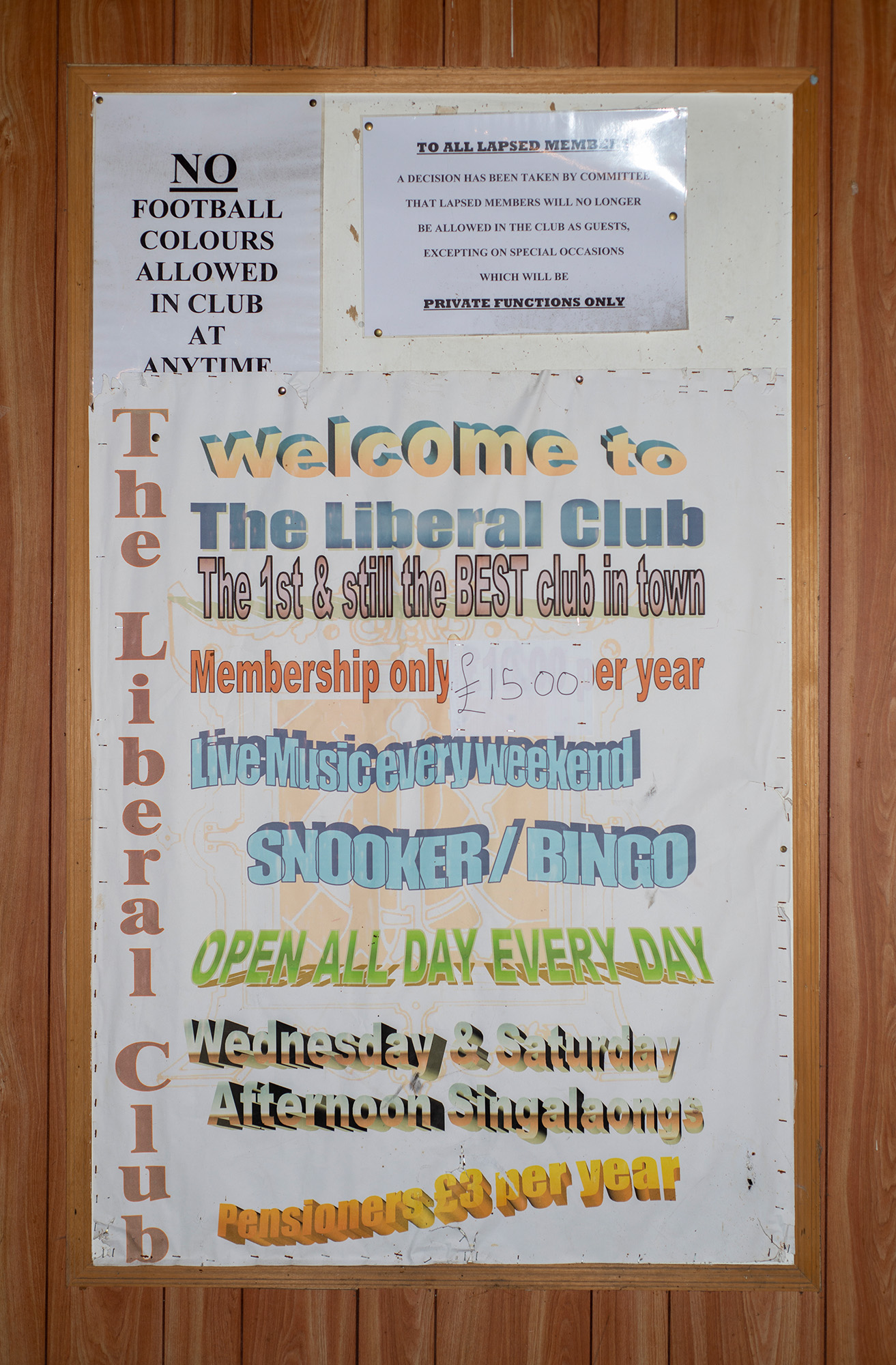

The building itself dates from 1886, standing at the edge of the town centre above a nail salon and charity shop. It’s a fine enough piece of Victorian architecture, with the exhibition barely announced externally - only a single open door at the street level indicating something has changed. The visitor experiencing immediate transportation from Paisley’s busy high street into a crumbling and silent space.
The building has lived many different lives – from Liberal Club, to working men’s social, to gig venue. It’s a building that shows in its skin the stories it’s witnessed, the people it’s contained, and the politics it’s aired. Dusty carpets, wallpaper peeling off, sun-bleached signage, damp, unknown stains, and debris all greet the visitor on arrival, continuing throughout its spaces.
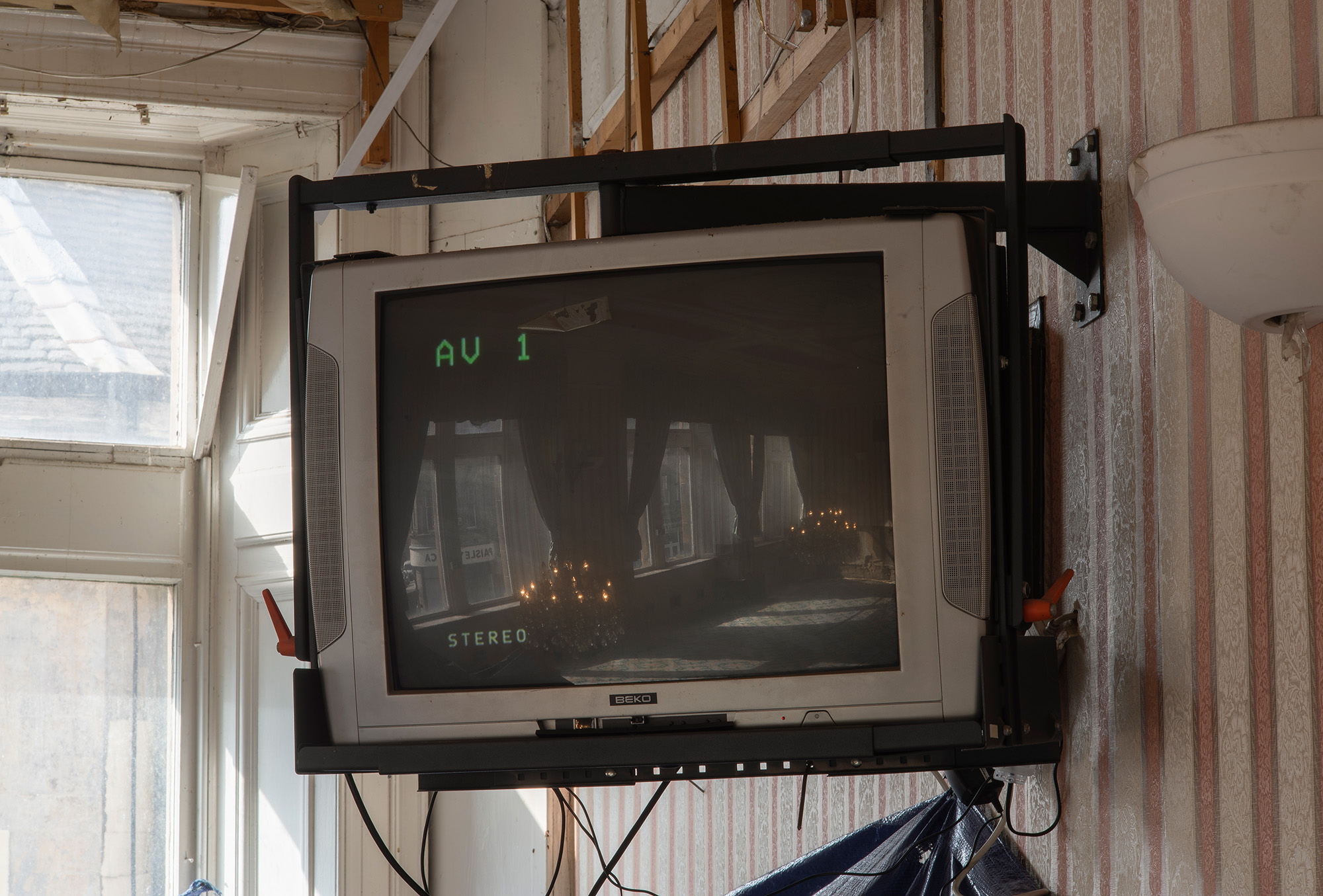
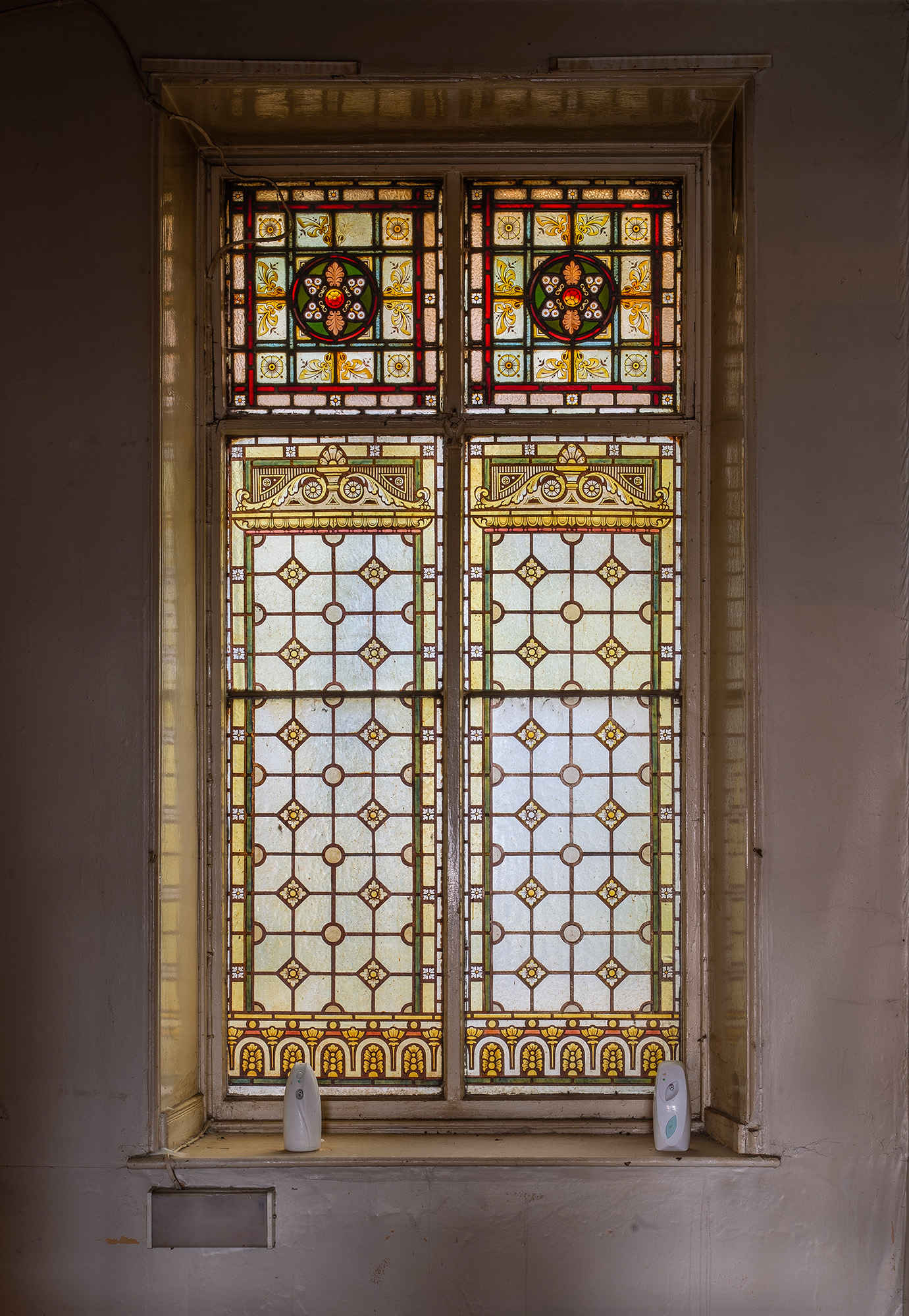

Paisley is known for its history of left-wing politics. Outside the club is a memorial to “A Great Communist” William Gallagher, and this history finds its way into the reading of the internal space. It could be read as provincial, or a little naff, but these clubs formed a huge element of social and cultural history. Who were the everyday people who populated this building over the twelve decades? When did the political debate and charged discourse fade into the booziness, parlour games, kipper ties, variety acts, and pub rock bands?
A sign referencing lapsed memberships and the price of drinks stands out among the bar area, referencing the totally alien protocol that governed the Liberal Club and other similar venues back in their heyday. Even relatively modern and mundane items like stray mix-CDs, posters designed in Microsoft WordArt, and beer mats with almost their original colouring are somehow fascinating in this context of the club’s history.
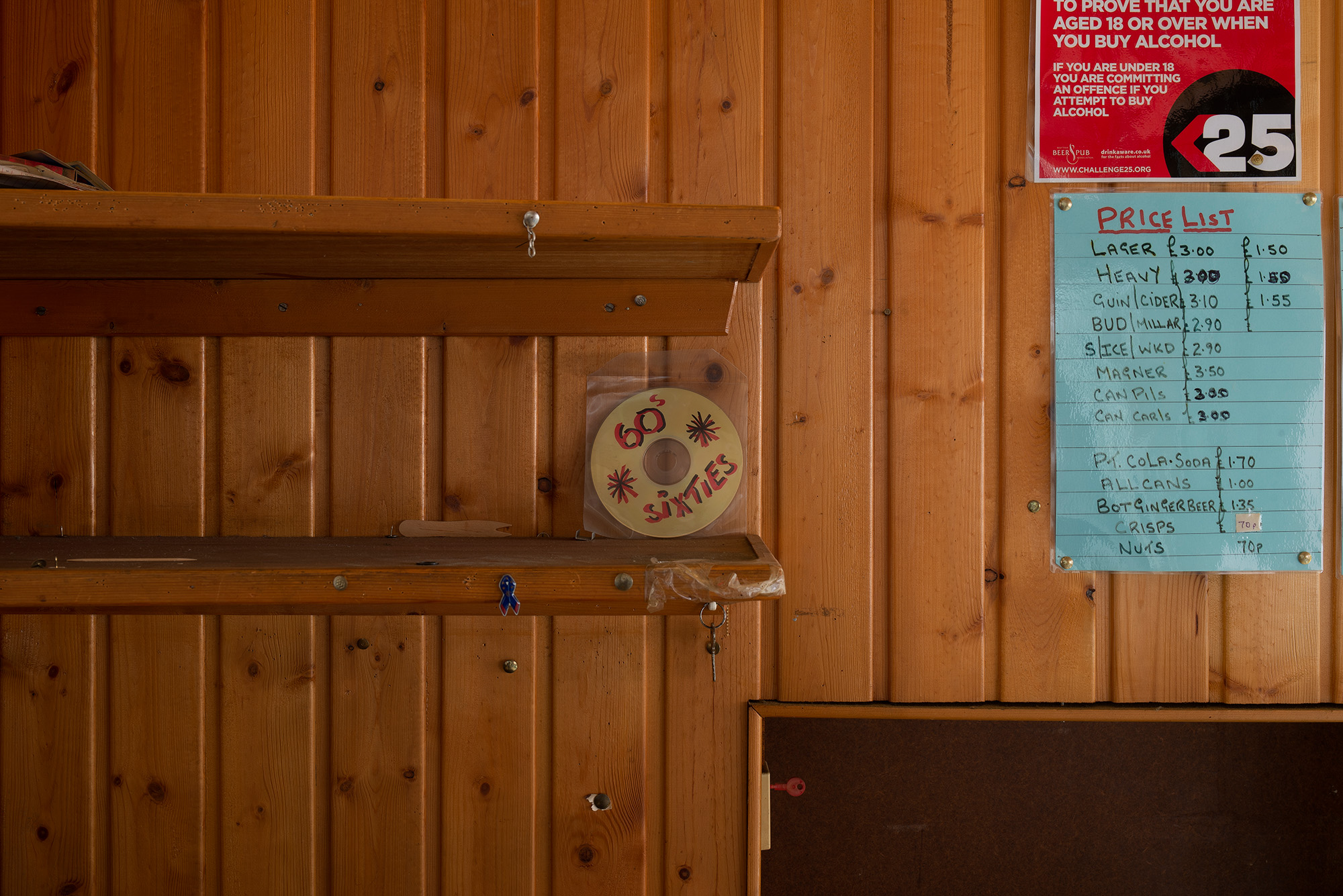


This dilapidation adds to the secretive feel of the exhibition. Would I normally be interested in visiting a snooker hall on a sunny Saturday afternoon? No. Would I be interested in visiting an abandoned Snooker Hall? More than anything else in the world. The snooker hall room itself is one of the standout and most atmospheric spaces of the exhibition. With the absence of one of the original snooker tables, Middleton has installed a sunken white tank, built to the same dimensions and ‘completing’ the grid of the room - yet juxtaposing the earthier tones of the orange walls, green felt, ironwork, and low levels of natural light. The tank itself is decorated with a handful of ephemeral objects such as coins collected from around the Club.
A mesh screen prevents any movement up the staircase, adding to the secrecy of where a visitor is allowed and not allowed access. The other side of this pourous barrier, decayed steps lead to an unknown space, to its side another closed door. Such hidden spaces, and unknown histories, offer simple but appreciated moment in the exhibition, that for all I knew could have been entirely unintentional
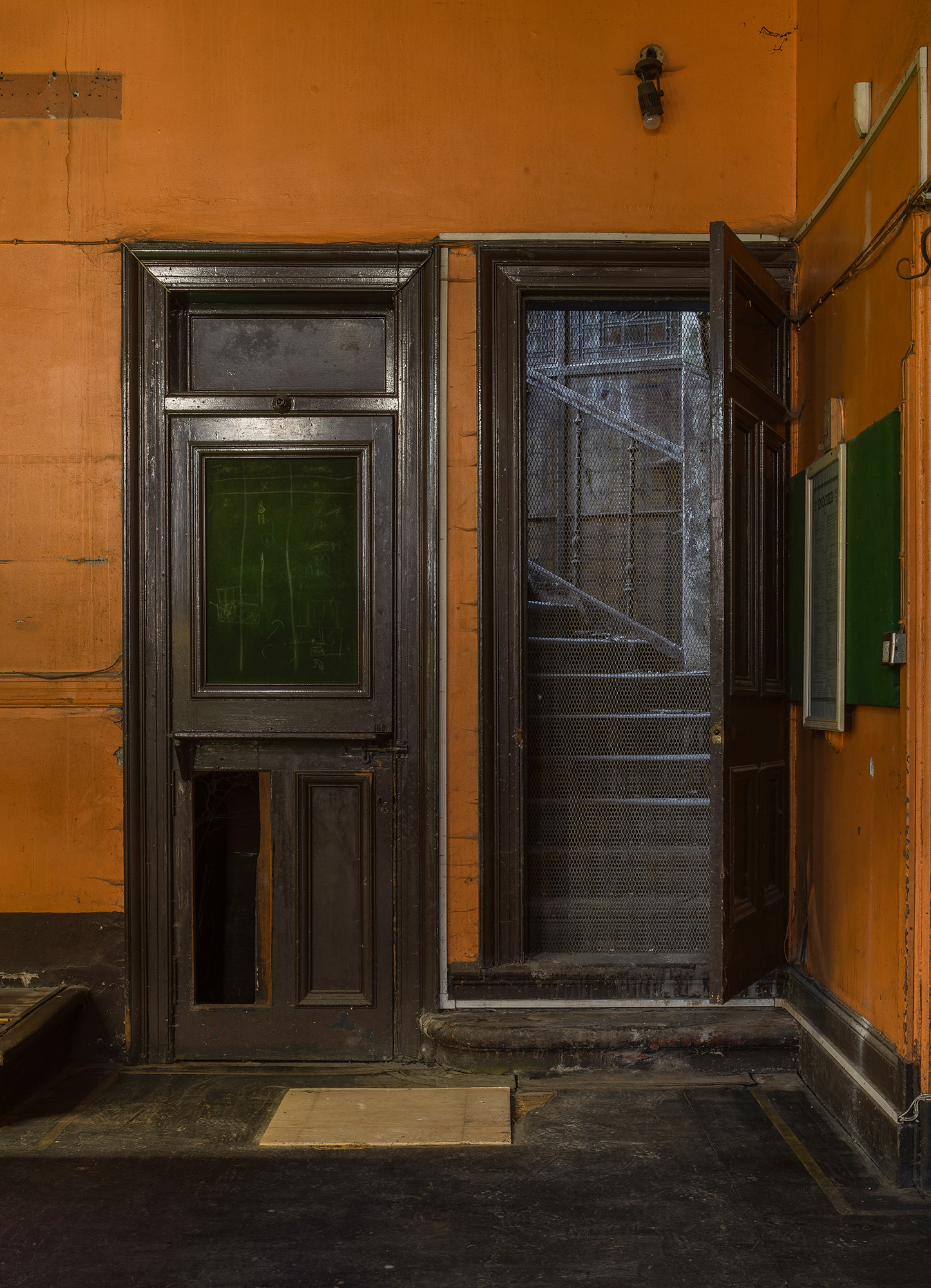

It’s that sense of mystery that Middleton plays into with the space. With no documentation of which elements he has added, subtracted, or rearranged, the only literature available refers to his process of work, not the outcome of his actions. In the space, the visitor starts to question the veracity of a discovered stray document, or whether a collection of items in a corner is curated or part of a general disarray.
Some interventions can leave a little too much to the imagination, even if there is an unsureness over who put them there, or when. A circular display of pint and wine glasses in the centre of The Wee Bar is perhaps too minimal of an intervention, and it’s a shame most of the main function room is taken over by a tarpaulin covering half of the stage when the upstairs gig venue (and former badminton hall) allows visitors to happily rummage around.


Middleton says a lot of his work was focused on cleaning up the rooms – which looking back at assorted urban exploration photos online proves true – and this emphasis on simply showing the Liberal Club with a sense of clarity is a satisfying artistic response. Visitors can freely move around and experience the space as wished, without the usual red tape, high-vis or stewarding an architect or historian may expect from a typical abandoned site visit.
It’s also a commendable act to inhabit the space as an artist and talk openly about the basic act of cleaning, giving an overlooked space some attention. Overall you come away thinking about what’s possible architecturally with our existing built environment, looking beyond the cycle of demolition and rebuild to create conditions to consider what we already have available.


David Dale Gallery, who worked with Middleton on the show, say that the building’s owner was more than happy for the gallery and artist to be occupying the building rather than squatters, but it’s future beyond that remains uncertain. It would be a fantastic building to retrofit, but it’s harder to prescribe what use it could provide to Paisley, and harder still to imagine how it could be financed. The current trend for façade-retention, but stripping back the body of a building, could be an outcome – this exhibition may have further value in showing what a loss that approach would be.
The club is a stone’s throw away from Heritage Lottery Funded spaces further down the high street and a £42million refurbishment and extension of Paisley Museum by Amanda Levete Architects - which despite promises to reference industrial and radical heritage looks like a bit of an urban shine that could be anywhere. If the museum does bring in the estimated 125k visitors to Paisley annually, the town would also benefit from opening up spaces like the Liberal Club to more truly showcase its architectural heritage and social history.

Bobby Jewell is a Glasgow-based & works in architectural comms around climate emergency. hosting an ambient radio shows for Resonance Extra, Clyde Built and elsewhere.
Stuart Middleton was born in Crewe in 1987 and is based in the UK. He studied BA Painting at Camberwell college of Art & at HBK Städelschule in Frankfurt am Main, finishing in 2016. He is represented by Carlos/Ishikawa London. His practice includes works on paper, installations, video, animation and sculpture.
www.stuartmiddleton.blogspot.com
www.carlosishikawa.com/artists/stuartmiddleton
visit
Paisley Liberal Club is open for public visits until 23 April 2022, information available from David Dale Gallery & Studios:
www.daviddalegallery.co.uk/programme/stuart-middleton
images
All images courtesy of David Dale Gallery, Glasgow. Photographs
© Max Slaven
publication date
01 April 2022
tags
David Dale Gallery & Studios, Glasgow, Heritage, Installation, Bobby Jewell, Stuart Middleton, Paisley, Site specific
www.daviddalegallery.co.uk/programme/stuart-middleton
images
All images courtesy of David Dale Gallery, Glasgow. Photographs
© Max Slaven
publication date
01 April 2022
tags
David Dale Gallery & Studios, Glasgow, Heritage, Installation, Bobby Jewell, Stuart Middleton, Paisley, Site specific
publication date
01 April 2022
tags
David Dale Gallery & Studios, Glasgow, Heritage, Installation, Bobby Jewell, Stuart Middleton, Paisley, Site specific


